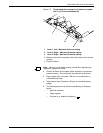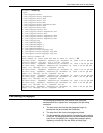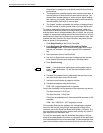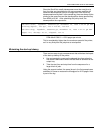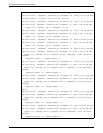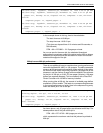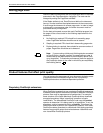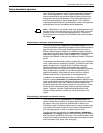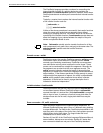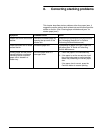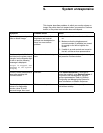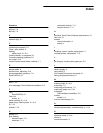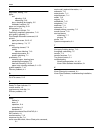
ADJUSTING PRINT QUALITY AND SPEED
XEROX DOCUPRINT 96/4635/180 NPS TROUBLESHOOTING GUIDE 7-11
Device-dependent operators
Some PostScript operators result in device-dependent PostScript
files. “Device dependence” means that devices having different
output characteristics may produce different-looking output even
though they use the same software. This section documents the
most serious examples of device dependence. The PostScript
Language Reference Manual, second edition, lists all of the graphics
state operators that are considered device-dependent.
Note: Depending on the emitter used, color-related operators may
be used even for monochrome jobs. On DocuPrint NPS, color jobs
undergo a color to monochrome mapping process. Therefore, if
these operators are included in the PostScript jobs, they can affect
the output.
Gray shading—setscreen and setcolorscreen
The PostScript operators setscreen and setcolorscreen control the
PostScript halftone software that simulates various intensity levels of
gray and color inks. Since each PostScript product may have a
different default halftone definition, the halftone patterns and gray
scale range may differ also. Because setscreen is inherently device
dependent (especially when used for pattern fills), PostScript
masters look different on almost every different model of PostScript
printer.
The operators are also used to perform pattern fills, since PostScript
Level 1 does not have a pattern fill operator. (PostScript Level 2 has
pattern fill operators.) As stated in the PostScript Language
Reference Manual, first edition, “Remember that everything
pertaining to halftones is, by definition, device-dependent. In general,
when an application provides its own halftone specifications, it
sacrifices portability. Associated with every device is a default
halftone definition that is appropriate for most applications.”
In addition to the device-dependent nature of halftoning, a spot
function is used by setscreen and setcolorscreen to determine the
order of pixel darkening in the halftone cell. When two pixels have the
same spot function value, their ordering values are determined
arbitrarily. Duplicate spot function values are very common. In fact,
almost all the various default spot functions generate duplicate
values. Therefore, different PostScript implementations yield
different halftone patterns, resulting in visual differences in the
output.
Gray shading—settransfer and transfer function
The PostScript operators settransfer and setcolortransfer are
used to change the procedure for mapping perceived color values in
the output of the print device into specified color values in the
PostScript master. PostScript devices use an internal transfer array
or procedure that takes into account the printing characteristics of
their marking engines in order to produce levels of color.
Transfer functions are called by the setcmykcolor, setbsbcolor,
setrgbcolor, and setgray operator before processing of the desired
color level that is specified in the master. The transfer function takes
a value from the stack and leaves another value on the stack for each
color component (red, green, blue, and gray).



